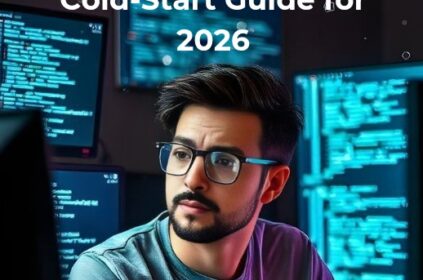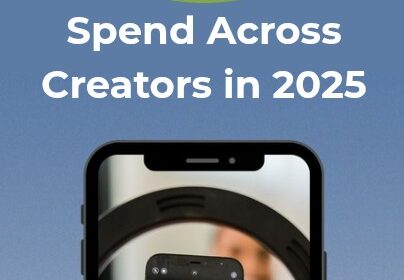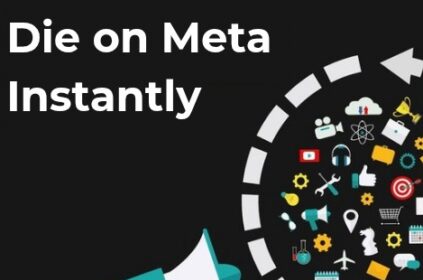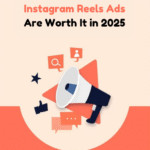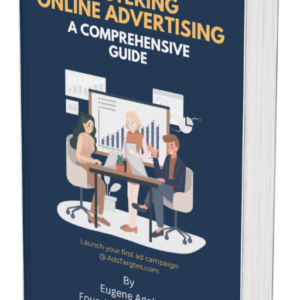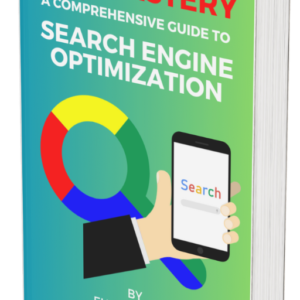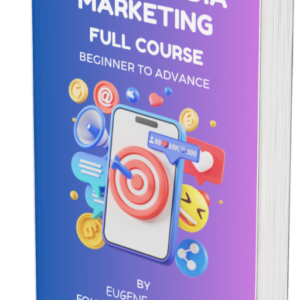Facebook Ads continue to dominate digital advertising, with over 3 billion monthly active users on Meta platforms in 2025.
For advertisers, that’s both an opportunity and a challenge.
The opportunity is the ability to reach virtually any audience; the challenge is finding the right people at the right time without burning through ad spend.
That’s where Facebook Ads audiences come in.
Audience targeting has evolved significantly in recent years, especially with privacy changes, data regulations, and shifting consumer behavior.
In 2025, the most effective campaigns are built on disciplined use of custom audiences, lookalike audiences, and broad targeting methods.
Each comes with its own advantages, limitations, and best-fit scenarios.
#1. Custom Audiences from First-Party Data
Custom audiences remain one of the most reliable targeting tools for advertisers.
By leveraging customer lists, email databases, or CRM integrations, you can upload data directly into Ads Manager and target those individuals across Meta platforms.
The value of custom audiences lies in intent. These users already know your brand, have interacted with your site, or purchased from you before.
Campaigns aimed at them typically show higher click-through rates (CTR) and better return on ad spend (ROAS).
According to marketing studies, retargeting audiences can deliver up to a 70% higher conversion rate compared to cold audiences.
In 2025, privacy compliance is crucial. Always ensure your first-party data collection aligns with GDPR, CCPA, and other global regulations.
Facebook provides a Conversions API to securely transfer customer data directly from your server to Meta, improving match rates while respecting user privacy.
For advertisers, building Facebook Ads audiences with first-party data isn’t optional anymore—it’s the foundation of sustainable targeting.
#2. Website Retargeting Audiences
Another key tactic is retargeting users who have already visited your website.
Using Meta Pixel or Conversions API, you can create audiences based on page visits, product views, cart activity, or checkout abandonment.
Retargeting campaigns are powerful because they meet users at different points of the buying journey. For example:
#1. Someone who viewed a product but didn’t add it to their cart can be nudged with a limited-time discount.
#2. Cart abandoners can be shown ads highlighting free shipping or customer reviews.
#3. Past buyers can be retargeted with upsells or complementary product offers.
A report notes that retargeted ads see up to 10x higher click-through rates compared to standard display ads.
In 2025, with increasing ad costs, this efficiency makes retargeting essential.
To keep Facebook Ads audiences fresh, rotate creative every two to three weeks and cap impressions to avoid fatigue.
A stale retargeting audience quickly loses effectiveness if the same message is shown repeatedly.
#3. Lookalike Audiences for Scalable Growth
Lookalike audiences remain one of Meta’s most effective scaling tools.
By analyzing your best customer data, Facebook identifies new users who share similar behaviors, demographics, and interests.
When built properly, lookalike audiences allow advertisers to expand reach without sacrificing quality.
For instance, an e-commerce store can upload its highest lifetime value (LTV) customers and generate a 1% lookalike to find new people with high purchase potential.
In 2025, Facebook’s machine learning has improved significantly.
With the Conversions API feeding server-side data, the algorithm builds lookalike audiences with stronger accuracy than pixel-only setups.
According to AdEspresso, advertisers using high-quality seed lists can see up to 73% higher ROAS compared to interest-based targeting.
The key is quality over quantity. Always start with a smaller, high-value seed audience before expanding to larger lookalike percentages.
This ensures you’re finding the right users, not just more users.
#4. Broad Targeting with Algorithmic Optimization
While custom and lookalike audiences are powerful, broad targeting has become increasingly valuable in 2025.
Meta’s algorithm is now advanced enough to identify high-intent users even without detailed targeting inputs.
Broad targeting means leaving age, gender, and interests open, while letting the system optimize delivery based on conversion signals.
This approach often works best for advertisers with large budgets and well-defined conversion events.
Broad targeting campaigns optimized for purchases outperformed narrow interest-based campaigns by 28% in cost efficiency.
With the right setup, Facebook Ads audiences built through broad targeting allow algorithms to learn faster and reduce wasted spend.
Advertisers should test broad targeting alongside other strategies, especially when scaling campaigns beyond small seed audiences.
In many cases, Meta’s delivery system finds buyers you wouldn’t have predicted.
#5. Engagement Audiences from Social Interactions
Engagement audiences allow you to retarget people who have interacted with your brand on Facebook or Instagram.
This includes video viewers, post engagers, page followers, and people who have saved or shared content.
These audiences are particularly useful for building mid-funnel campaigns.
Someone who has watched 50% of your video ad, for example, has shown enough interest to be retargeted with product-specific messaging.
Meta reports that video view retargeting campaigns can cut cost per acquisition (CPA) by as much as 34% compared to cold traffic ads.
In 2025, engagement audiences are increasingly important because not every user visits your website immediately.
By capturing them within the platform, you keep them in your funnel without requiring an external touchpoint.
When structuring Facebook Ads audiences, engagement retargeting is a low-cost, high-impact way to nurture interest and drive conversions.
#6. Dynamic Product Audiences
Dynamic Product Ads (DPAs) use product catalog data to automatically show users items they’ve viewed, added to cart, or might like based on browsing behavior.
These ads personalize the experience, ensuring each user sees products most relevant to them.
For e-commerce advertisers, dynamic audiences are a must in 2025, especially since it has been noted that using DPAs saw a 33% higher return on ad spend compared to static ads.
The advantage of dynamic audiences is automation. Instead of manually building ad sets, Facebook dynamically generates ads for each user, drawing from your catalog.
This keeps creativity relevant without increasing production workload.
By incorporating dynamic product audiences into your strategy, you ensure your ads stay personalized, timely, and aligned with user intent—all critical factors in improving conversions.
#7. Value-Based Lookalike Audiences
Beyond standard lookalikes, value-based lookalike audiences take targeting a step further.
Instead of treating all customers equally, you can assign values (such as lifetime purchase amount) to your seed list.
Facebook then prioritizes finding new users likely to generate higher revenue.
This strategy is especially effective for subscription services, SaaS companies, and e-commerce stores with varied purchase values.
Instead of acquiring just any customer, you’re acquiring customers who mirror your highest spenders.
In 2025, with acquisition costs rising, focusing on quality over quantity is essential.
A study found that value-based targeting improved average order value (AOV) by 19% compared to standard targeting.
By building Facebook Ads audiences around customer value, advertisers can shift from chasing clicks to maximizing profitability.
Best Practices for Facebook Ads Audiences in 2025
While these seven audiences are powerful individually, the real strength lies in combining them strategically.
Custom audiences nurture loyalty, lookalikes fuel growth, broad targeting expands reach, and dynamic product ads drive conversions.
The key is testing, refining, and letting data guide your budget allocation.
#1. Always diversify your audiences to avoid saturation.
#2. Refresh creative frequently to combat ad fatigue.
#3. Use exclusions to prevent overlap and wasted impressions.
#4. Monitor performance at both ad set and campaign levels.
Facebook Ads audiences in 2025 require both precision and flexibility.
Advertisers who rely solely on one method often miss opportunities, while those who diversify see more consistent performance.
Audience Overlap and Segmentation Challenges
One of the overlooked issues in Facebook advertising is audience overlap.
When advertisers run multiple campaigns without exclusions, the same users may appear in multiple ad sets.
This results in higher costs, reduced efficiency, and bidding against yourself in the auction.
For example, a user who falls into both your website retargeting list and your engagement audience may be shown duplicate ads, creating unnecessary frequency.
Facebook Ads audiences work best when structured with clear segmentation. Use exclusions strategically to ensure each campaign reaches a unique pool.
For instance, exclude recent buyers from prospecting campaigns to avoid wasting impressions.
Facebook’s Audience Overlap tool inside Ads Manager can also help identify where your groups intersect.
In 2025, segmentation requires discipline. Advertisers who monitor overlap not only lower cost per acquisition but also maintain a cleaner funnel.
Each audience—whether custom, lookalike, or broad—should have a distinct purpose and stage in the journey.
By controlling overlap, you give the algorithm clearer signals, avoid wasted spend, and improve overall delivery.
The result is a smoother ad experience for users and better ROI for brands.
The Role of Audience Size in Campaign Performance
The size of your Facebook Ads audiences directly impacts how campaigns perform. Too small, and delivery suffers because the algorithm lacks data to optimize effectively.
Too large, and ads may be shown to less qualified users, lowering return on ad spend. In 2025, finding the right balance is essential for performance.
For custom audiences, a minimum of 1,000 users is typically required to ensure delivery, though larger lists improve stability.
Lookalike audiences often perform best between 1% and 3% similarity, giving enough reach while maintaining relevance.
Broad targeting naturally includes millions of users, but performance depends heavily on accurate conversion tracking to guide the algorithm.
It’s also important to consider your budget relative to audience size.
A small budget spread across millions of people leads to under-delivery, while high spend on a narrow group risks ad fatigue.
A good practice is to align daily budget with audience scale, ensuring enough impressions for the system to learn.
Optimizing Facebook Ads audiences isn’t only about who you target but also how large that pool is.
Getting this balance right allows campaigns to scale while keeping acquisition costs predictable.
Measuring the Long-Term Value of Audiences
While short-term metrics like CTR and CPA are useful, the real measure of success is the long-term value of your Facebook Ads audiences.
Not all conversions are equal—some customers buy once and never return, while others become repeat buyers and brand advocates.
In 2025, advertisers increasingly focus on metrics like customer lifetime value (LTV) and retention rates when evaluating audience performance.
For example, a value-based lookalike audience may initially cost more per acquisition but generate higher average order values and repeat purchases.
In contrast, broad targeting might bring in larger volumes but lower retention.
Tracking long-term audience value requires integration with CRM systems and analytics tools.
By connecting Facebook Ads audiences to customer purchase history, you can see which groups deliver not just immediate revenue but also sustained profitability.
This insight informs future budget allocation, ensuring spend goes toward audiences that create durable growth.
The best advertisers treat audiences as long-term assets rather than short-term traffic sources.
By measuring lifetime value, businesses can identify which segments deserve more investment, which need refining, and which to pause entirely.
This approach creates a sustainable foundation for ad success well beyond initial clicks.
Conclusion
Success with Facebook Ads in 2025 depends on how effectively you define and manage audiences.
Custom audiences provide retention, lookalikes scale growth, broad targeting leverages algorithms, and engagement or dynamic audiences personalize delivery.
By layering these approaches, advertisers can optimize reach, control costs, and drive measurable results.
As competition intensifies, disciplined use of Facebook Ads audiences isn’t optional—it’s the difference between wasted spend and profitable growth.
Implement these seven strategies, track performance closely, and refine based on data. With the right balance of precision and scale, your campaigns will deliver stronger ROI throughout 2025.


